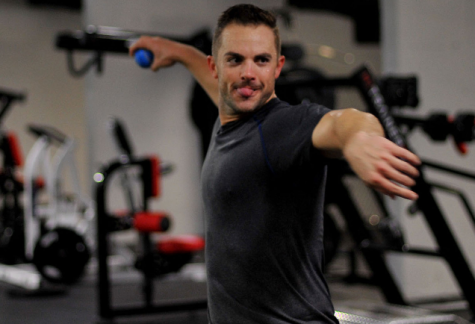
David Wright’s Captain America moniker may not accurately describe the Mets’ third baseman, considering the strenuous and extensive measures he must go through in order to deem himself healthy to play.
After reading an article in the April issue of Men’s Fitness, reporter Ron Berler details the rehab Wright must go through in order to get himself ready to play before each game and how there will always be levels of discomfort and some pain involved in the process.
Wright, 33, was already regarded as one of the hardest working players on the Mets, routinely arriving in Port St. Lucie early to get his workouts in, setting a good example for all the young players on the team. Wright still heads down to Florida early for his workouts, however, his workouts now include additional core and stretching exercises, instead of his normal weight lifting training.
Wright was diagnosed with lumbar spinal stenosis during a rehab assignment with Port St. Lucie last year. He had been placed on the 15-day DL in April when he pulled a hamstring on a stolen base attempt against the Phillies at home. When Wright was told to run at 50% during his rehab assignment a few weeks later, he immediately felt pains in his lower back and legs, and had to shut his workout down.
Doctors revealed that he had a smaller than normal spinal canal that he’s had since birth, which was further complicated by a series of calcium deposits accumulated from his fractured vertebrae. Needless to say, Wright was distraught, but knew if he wanted to ever step foot on the field again, he needed to start the grueling process of getting his back into playing condition.
“I moped around for a few days,” Wright said. “And then I decided if I wanted to play again, I had to get to work.”
Wright partnered with a distinguished Los Angeles spinal physician, Dr. Robert Watkins, who has treated past baseball luminaries like Dave Winfield, Reggie Jackson, and Don Mattingly, a man Wright would ultimately seek out for advice.
“I talked to David, but I don’t know exactly everything that’s wrong with him,” Mattingly said. “We talked about routines and how you got back into those routines and how to figure that out — ‘How much batting practice can I take? How many ground balls can I take?’ — and still stay strong for the game.”

Dr. Watkins put Wright in contact with Dr. Michael Schlink, an L.A. based physical therapist whose field is in spine-related core stabilization and strengthening. Wright visited Dr. Schlink each day for a month, then two to three times a week for two months, where Wright was taught lower back strengthening exercises which are explained in great detail in the article.
Eventually, Wright’s doctors had him incorporate baseball related drills to his rehab routines which combined running and throwing drills along with hitting in batting cages.
“We had him sit back into his hip more and feel his weight more centered through his feet and core,” Meyer said. “This adjustment allowed his hips and trunk to explode and rotate left through the hitting zone. Clearing his hips properly during the swing allowed his back to be more upright and decompressed. It’s the kind of adjustment you might make in a golfer’s address.”
Once Wright and the Mets felt comfortable with his process and rehab, he made his long awaited return on August 24 in Philadelphia. During his first at-bat, Wright crushed a 90-MPH fastball into the left field stands of Citizens Bank Park. Hollywood couldn’t have produced such a dramatic return as this. Considering the initial shock of the injury, an intense rehab process, and transitioning from his old workout routines to the new core and balance related ones, Wright only wishes he had employed this new conditioning routine sooner.
“I live by it now. I like to think that I’m a walking example that when something like this happens, if you put in the effort and the work, you can rebound and keep persevering. When you do something you love, you’ll do anything you possibly can to get on that baseball field.”
Wright understands that he’ll never play 140+ games in a season going forward, something he had accomplished in seven previous seasons. Manager Terry Collins hopes to have Wright play in around 130 games for 2016, but even that goal seems rather lofty. Wright’s back condition can also affect his legs, so the prospects of nagging injuries or aches and pains might occur throughout the year. The Mets will most likely turn to Wilmer Flores whenever Wright gets a game or two off.















